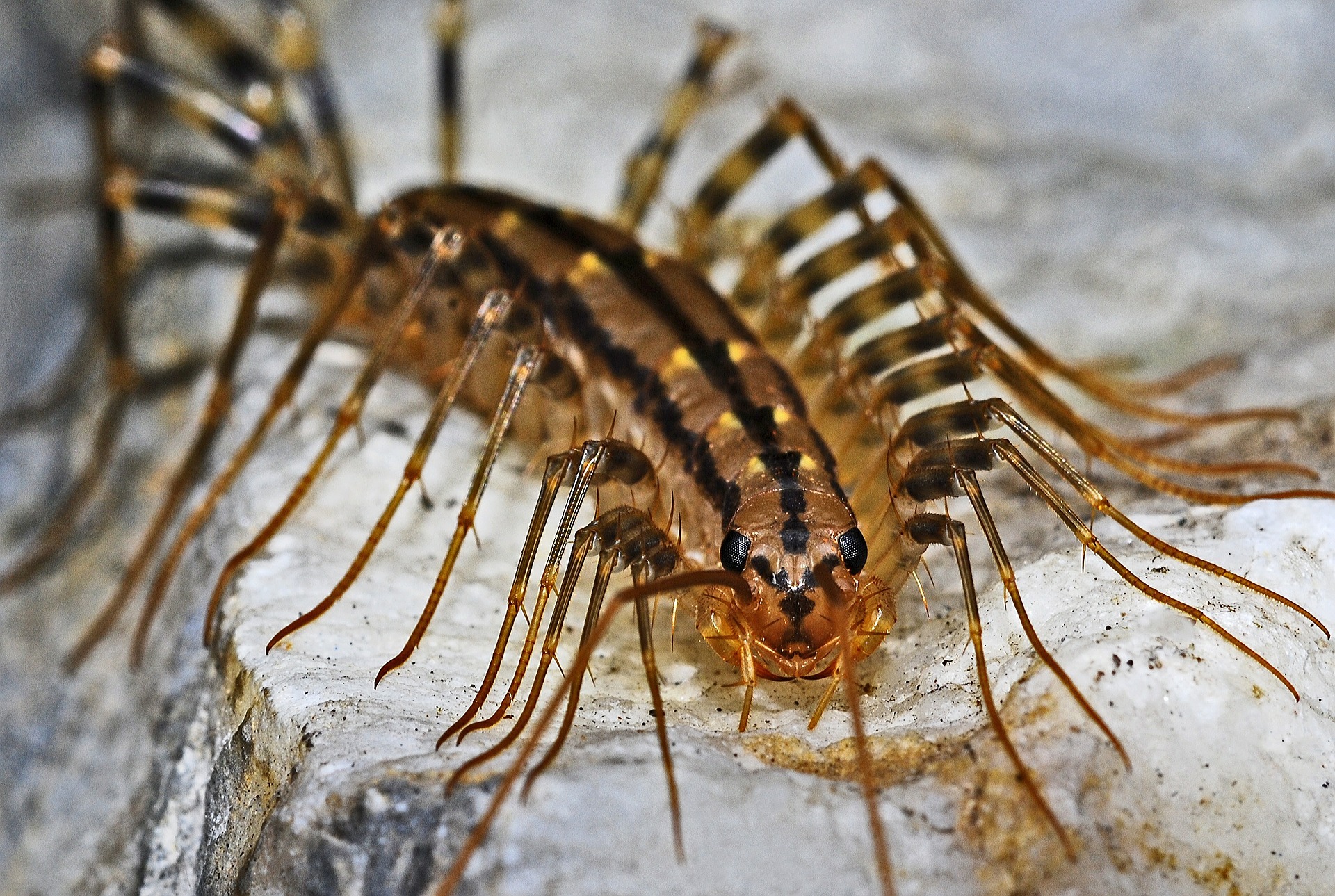What You Should Know About Centipedes

With long bodies and multiple legs, centipedes can be one of the most startling pests to see crawling around your home. If you’ve spotted centipedes around your home or think you have a problem, here’s what you should know.
What are the most common types of centipedes?
The most common type of centipede in Wisconsin is the House centipede (Scutigera coleoptrata). Originally from Mexico, this is one of the only species that breeds indoors. As the name implies, House centipedes are commonly seen in and around Fox Cities homes, particularly in high-moisture areas. They tend to love basements, bathrooms, and even your well-watered houseplants.
What do House Centipedes look like?
House centipedes are up to 1 1⁄2 inches long and can have up to 15 pairs of long legs. Their body is made up of multiple segments, and each segment has one pair of legs. With the larger size and so many legs, they can often be startling when you see one scurrying from your wall or floor.
Are centipedes dangerous?
House centipedes are not dangerous to humans. They may bite you if handled, but generally a centipede bite just results in a red bump, similar to a mosquito bite or other insect bite/sting. Unless you’re overly sensitive to other types of insect bites, you’re likely to feel minimal to no effect at all.
What do centipedes eat?
Centipedes are predators that actually help eliminate other bugs in your home. They feed on insects, spiders, and other small arthropods. That being said, because they eat other bugs, finding centipedes in your home may be a sign of a larger insect or pest problem.
Are centipedes nocturnal?
Yes. They’re most active at night and like dark, damp places. Because of that, you may have a centipede problem long before you ever see one in your home. If you spot one during the day, that means there are probably more around somewhere.
How do centipedes get in the house?
Like most insects, they will gravitate toward warmth and sneak in through little cracks and under doors. Because they’re fairly narrow creatures, they can be pretty sneaky and get in easily through small spaces.
What’s the difference between centipedes and millipedes?
People often confused centipedes and millipedes. We wanted to take a few minutes to explain the differences between the two.
- The legs look different. Centipedes have just one set of legs per body segment that sit more toward the side of their body. On the other hand, millipedes have two sets of legs per body segment and they sit right under their body.
- Per the note above, centipedes also have fewer legs than millipedes.
- Centipedes are flatter whereas millipedes are more rounded when viewed from the side.
How do I deter centipedes?
There are a few things you can do to deter centipedes from your home.
- Keep moisture content low. Centipedes like moist areas, so running fans and dehumidifiers in moist areas, such as bathrooms and basements, can help.
- Clean frequently. Sweeping, vacuuming, and dusting can help you minimize ants, spiders, and other bugs around your home. Since centipedes feed on other bugs, this will eliminate their food source and make your home less appealing. Plus, eliminating clutter gives centipedes fewer places to hide.
- Seal everything up. Adding door sweeps, repairing any holes in the screens, and sealing up any foundational cracks can help prevent centipedes and other pests from making it inside.
While these can help deter pests, they won’t eliminate the problem if you’re already dealing with an infestation or have spotted centipedes in your home. In those cases, we recommend contacting a pest control specialist, like K&C Pest Control. Professionals can help seal up entrances and provide barriers to keep pests out.
If you suspect rodents or other pests in your Fox Cities home, contact us at 920-582-9000.